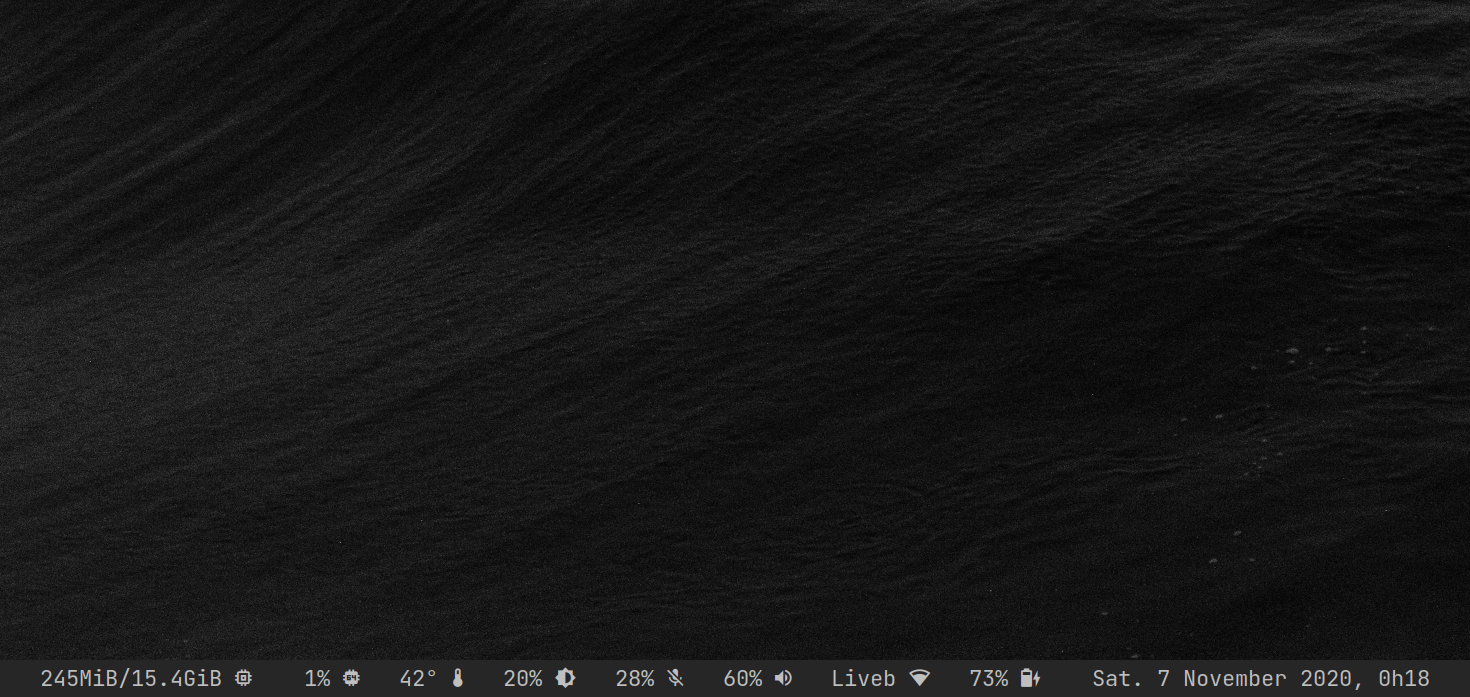A system monitor written in Rust and C.
- date and time
- battery (level, status, design level based)
- wireless (state, essid, signal strength)
- wired (state)
- audio sink and source (level, muted)
- brightness
- cpu usage, frequency and temperature
- memory (percent or used/total in gigabyte/gibibyte)
- dynamic and customizable labels
- customizable format output
- configuration in YAML
Baru gathers the information from /sys and /proc filesystems (filled by the kernel). Except audio and network modules which use C libraries.
There is no memory leak over time. All modules are threaded. Thanks to this design (as well Rust and C), baru is lightweight and efficient. It can run at high refresh rate with a minimal processor footprint.
The audio module communicates with the PipeWire/PulseAudio server through client API to retrieve its data.
Wireless and wired modules use the netlink interface with the help of libnl to talk directly to kernel and retrieve their data.
In addition, wireless module uses the 802.11 API.
Baru is modular. This means that only the modules you want to see are instantiated and executed.
- libnl (for wired and wireless modules)
- libpulse (for sound and mic modules)
Rust is a language that compiles to native code and by default statically links all dependencies.
Simply download the latest release of the compiled binary and use it (do not forget to make it executable chmod +x baru).
For Arch Linux users, baru is present as a package in the Arch User Repository.
The binary looks for the config file baru.yaml located in $XDG_CONFIG_HOME/baru/ (default to $HOME/.config/baru/).
If the config file is not found, baru prints an error and exits.
All options are detailed here.
Example:
format: '%m %f %c %t %b %i %s %w%e %a %d'
tick: 50
battery:
full_design: true
low_level: 30
full_label: '*'
charging_label: '^'
discharging_label: 'b'
low_label: '!'
unknown_label: '?'
format: '%l %v'
brightness:
label: 'l'
format: '%l %v'
cpu:
label: 'c'
high_label: '!'
format: '%v %l'
cpu_freq:
tick: 100
high_level: 60
label: 'f'
high_label: '!'
format: '%v %l'
memory:
core_inputs: 2..5
label: 'm'
high_label: '!'
format: '%v %l'
mic:
label: 'i'
mute_label: '.'
format: '%v %l'
sound:
label: 's'
mute_label: '.'
format: '%v %l'
temperature:
core_inputs: 2..5
label: 't'
high_label: '!'
format: '%v %l'
wired:
discrete: true
label: 'e'
disconnected_label: '\'
format: '%l'
wireless:
interface: wlan0
display: Essid
max_essid_len: 5
label: 'w'
disconnected_label: '\'
format: '%v %l'$ baru
Clément Dommerc for providing me with the C code for the lib netlink, wireless part.
Mozilla Public License 2.0




